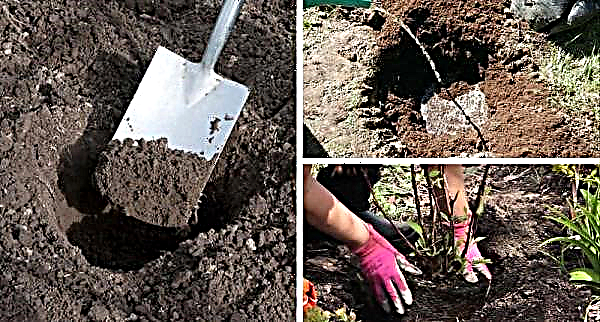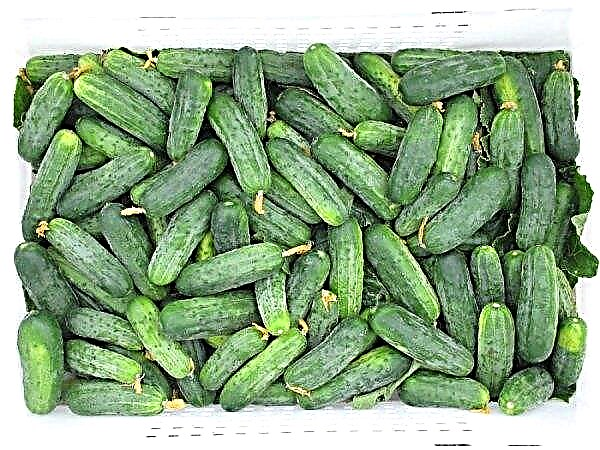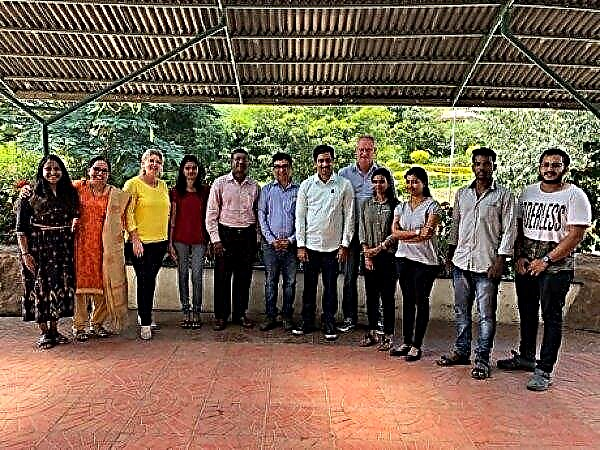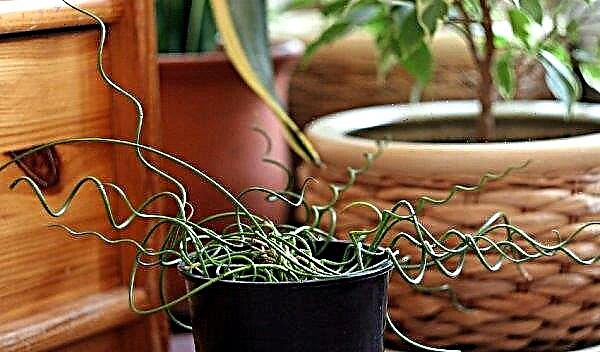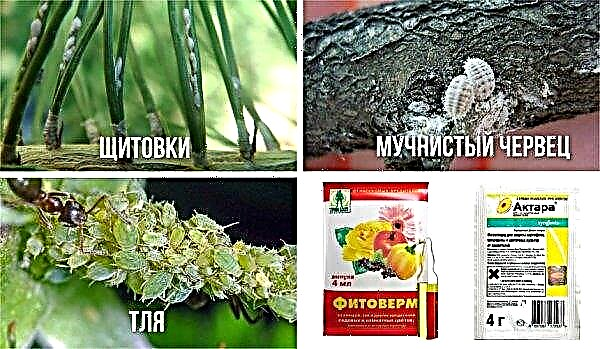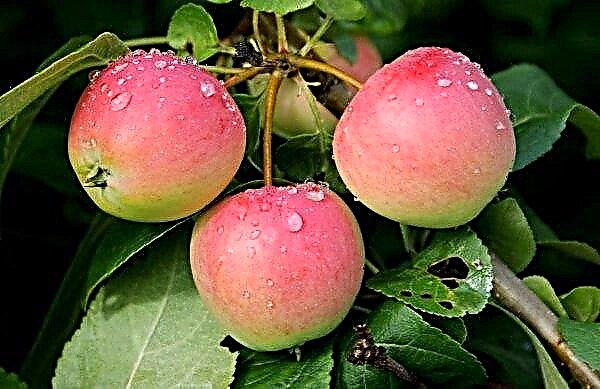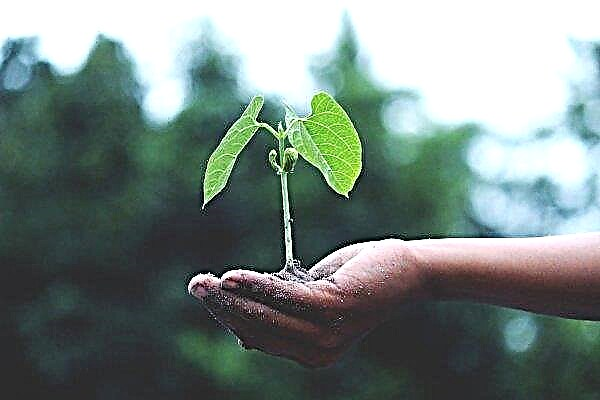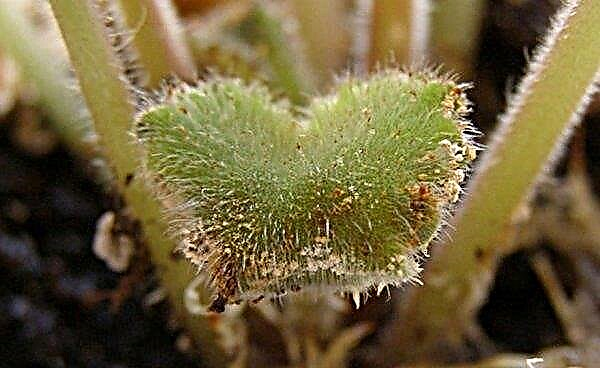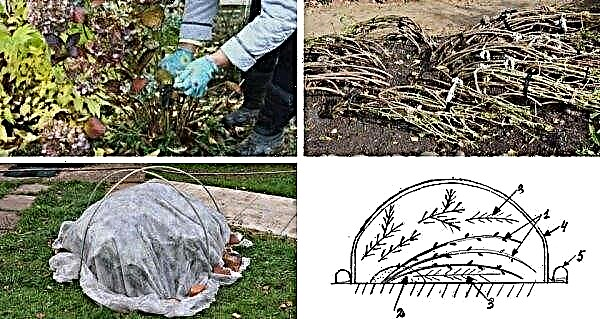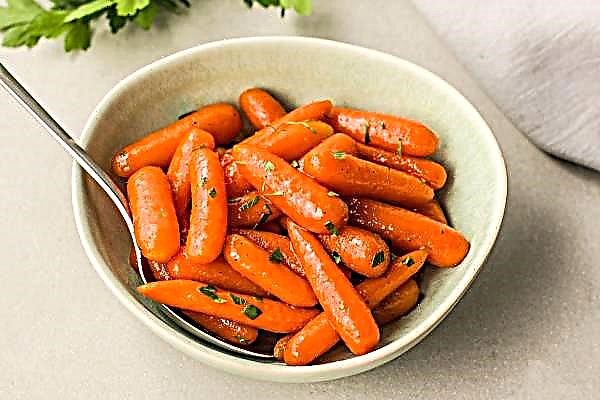Tomatoes are among the most popular vegetables, so everyone has long been accustomed to their traditional look. But modern breeders do not stop and develop new varieties that are surprising in size, shape, color, taste and other characteristics. These new exotic varieties include swamp tomatoes.
Characterization and description of the variety
The tomato variety “swamp” is a fresh and extraordinary trend in the development of Russian selection science. It was recently removed and entered in the State Register of Russia. This variety with quite conflicting characteristics, and each gardener will have to decide for himself to grow it in his garden:
This variety with quite conflicting characteristics, and each gardener will have to decide for himself to grow it in his garden:
- this is an early variety whose fruits appear three months after sowing seeds;
- the height of the bush when grown in open areas can be up to one and a half meters, in greenhouse conditions - up to 1 m 10 cm;
- the variety is indeterminate;
- plant leaves have a standard appearance for tomatoes. They are large, placed on the bushes in a small amount;
- the fruits look exotic: ripe green tomatoes with pinkish or yellowish patches, as well as a clearly visible dark green insert at the stalk;
- tomatoes have excellent taste characteristics;
- variety from salad; fruits are consumed both fresh and in pickles;
- bushes need to be formed. The largest crop is possible with two stems;
- plants need garter and infrequent pinching;
- the fruits are slightly flattened, have a ribbed shape;
- tomatoes grown in the open field can weigh from 150 to 250 g; if tomatoes were grown in greenhouse conditions, then their mass can be increased to 300-320 g;
- variety with an average level of productivity: up to 6 kg per 1 sq. km. m;
- tomatoes retain their presentation for a short time;
- tomatoes are poorly transported;
- the flesh of the fruit is loose;
- not resistant to a number of diseases and pests.
Advantages and disadvantages
- Tomatoes "swamp" growers fell in love with a number of features, namely:
- the type of fruit is exotic;
- very tasty;
- the fruits ripen early;
- the variety is characterized by good yield;
- stable fruiting with sufficient moisture;
- universal in application;
- do not show whimsicalness in leaving, are not exacting to the soil;
- Feel good in prolonged rains and on marshy soils.
Important! Grade «swamp» Feels better in greenhouse conditions than in open spaces.
And yet, something stops gardeners.
- They are afraid to breed these tomatoes, and here's why:
- do not preserve the presentation in transit;
- spoil relatively quickly during prolonged storage;
- require tying;
- stepsoning is necessary;
- Do not show high resistance to disease.
Features and optimal landing conditions
Sowing seeds for seedlings to obtain “swamp” tomatoes occurs most often in early spring, although this process can be started even earlier if desired. Before sowing, the seeds must be checked for the possibility of fruiting in saline. Then they are treated and disinfected with a solution of potassium permanganate, after which it is recommended to determine the seed under the influence of a growth stimulator in order to increase its protective forces and contribute to better seedlings.
The seeds that have been processed should be dried thoroughly, quenched in the refrigerator for several days, after which they are absolutely ready for sowing in the prepared soil. Soil also needs some preparation. First, it needs to be fertilized by preparing a balanced nutrient mixture of turf land, peat, sand, humus, and mineral fertilizers. Secondly, disinfection with boiling water and a mild potassium permanganate solution will be needed. For sowing seeds for seedlings, wooden boxes, plastic or plastic containers, as well as individual peat cups, the use of which will not require picking, are suitable. Seeds are laid out on the soil surface at a distance of 2-3 cm and are slightly deepened into the ground and watered. Cover with foil material and no longer water until the shoots appear - another prerequisite.
For sowing seeds for seedlings, wooden boxes, plastic or plastic containers, as well as individual peat cups, the use of which will not require picking, are suitable. Seeds are laid out on the soil surface at a distance of 2-3 cm and are slightly deepened into the ground and watered. Cover with foil material and no longer water until the shoots appear - another prerequisite.
Prepare a room with a temperature of + 22 ° C to + 25 ° C. Since the variety “swamp” is quite hygroscopic, the humidity in the room should be between 60 and 80%. Emerging shoots are identified in a well-lit place. After several leaves appear on the plants, the seedlings dive, which helps to strengthen their roots.
Did you know? The calorie content of 100 g of tomatoes is not more than 22 kcal.
Rules for planting seedlings
Before planting seedlings at a permanent place of cultivation, a hardening procedure is needed. It consists in the fact that the plants are carried out for several hours, first on a balcony or veranda, and then on open air. The preparatory procedures also require the land, in which seedlings will be planted. The soil needs to be dug up, fertilizers (organic and mineral) to be applied. It will not be superfluous to moisten the soil with a weak solution of potassium permanganate (for the purpose of disinfection). Seedlings are planted in late May. Choose a not very warm day when there will be no wind and sun. Plants are planted in the soil a couple of centimeters deep at the rate of 3 shrubs per square meter according to the pattern: 50 x 50 cm. A peg-support of a growing plant is driven in near each. It will not be superfluous to immediately tie the bushes, without pinching the stem too much. Pour all planted tomatoes with warm water.
Seedlings are planted in late May. Choose a not very warm day when there will be no wind and sun. Plants are planted in the soil a couple of centimeters deep at the rate of 3 shrubs per square meter according to the pattern: 50 x 50 cm. A peg-support of a growing plant is driven in near each. It will not be superfluous to immediately tie the bushes, without pinching the stem too much. Pour all planted tomatoes with warm water.
Tomato Care
There are no particular difficulties in growing tomatoes of this variety. They are quite unpretentious.
Important! Best for planting tomato seedlings "Boloto» soil is suitable for a permanent place, in which carrots, cucumbers, and cauliflower grew before tomatoes.
Feeding and watering
Variety "swamp" loves moisture, so watering the plants every day will not be amiss, especially the first time after planting in the ground. Then there will be enough watering with warm water once every few days. The main thing is that there is no significant stagnation of water. Like any other tomato, this variety needs top dressing. It should be carried out several times during the period of full maturity. Both organic and mineral finished fertilizers are suitable. A couple of times you can fertilize with nitroammophos, after watering the plant, after feeding, you should water again.
Like any other tomato, this variety needs top dressing. It should be carried out several times during the period of full maturity. Both organic and mineral finished fertilizers are suitable. A couple of times you can fertilize with nitroammophos, after watering the plant, after feeding, you should water again.
Such a mixture is suitable as fertilizer: 1 bucket of chicken droppings in water (1:15) + ash (300 g) + superphosphate (50 g). Spraying plants "Epin-extra" contributes to a more productive setting and increase productivity. Copper and sulfur as part of top dressing help prevent fungal infections of plants.
Did you know? Red tomatoes are more nutritious than yellow tomatoes.
Shrub formation and pinching
Bushes of tomatoes of the claimed variety require the formation and infrequent pinching. For maximum productivity, it is recommended to form plants in two stems in the future. The process is better to start when the tomato is fully grown and has already begun to grow. You need to pinch the shoots from the first appearing brush with flowers (when the shoot reaches a length of 5 to 7 cm). The most suitable time of day for this is a rainless morning. You need to infiltrate the swamp tomatoes infrequently - 2-3 times for the entire time of their cultivation. When the tomato bushes reach the desired growth, the lower leaves are removed.
The most suitable time of day for this is a rainless morning. You need to infiltrate the swamp tomatoes infrequently - 2-3 times for the entire time of their cultivation. When the tomato bushes reach the desired growth, the lower leaves are removed.
Did you know? Almost 95% of the mass of tomato is water.
Soil loosening
Around tomato bushes should systematically loosen the soil. This is necessary to improve the process of oxygen and moisture to the root system. This is especially recommended after watering to avoid crusting. Loosening should not be deep, as damage to the roots is possible (a few centimeters in depth will be enough). Emerging weeds are also removed when loosening
Diseases and pests
The variety is not resistant to diseases and pests. Plant can attack late blight, apical rot. Strongly mows the health of the roots and fruits of anthracnose. The disease manifests itself as follows: the skin of tomatoes becomes soft, turns brown, blackens over time. As a result, the fruit dries.
Most often, swamp tomatoes bother the same pests as other varieties: winter scoop, Colorado potato beetle, aphids, whiteflies, wireworms. Favorite variety of high humidity is especially conducive to the development of diseases and the appearance of pests.
Important! To timely identify problems with plants, you need to periodically inspect them.
In order to prevent from diseases and harmful insects, the following measures are used:
- seeds are sown with immunocytophytes before sowing;
- the bushes are periodically sprayed with “Quadrix” or “Flint”;
- they process tomatoes with sulfur and copper solutions.

Harvesting and storage
Starting to pick up tomatoes, you need to remember:
- they must be removed from the bush before the temperature reaches below + 8 ° C, otherwise they will deteriorate very quickly;
- it is better to collect fruits in the afternoon when there is no dew;
- tomatoes should be sorted;
- the tomatoes wiped during collection moistened with vodka or alcohol with a cotton swab are disinfected and stored longer.
To extend the shelf life of tomatoes, the following conditions must be provided:
- in the room where they are stored, it should be dark and cool;
- optimal temperature - from +5 to + 12 ° C, air humidity - 80%;
- Tomatoes should be carefully placed in containers made of wood or plastic with the plots facing up;
- unripe tomatoes are stored longer.
Did you know? Unripe tomatoes have one toxic component - solanine.
Tomatoes "swamp" are interesting and unusual. This is the reason for the disagreement on the question of whether to grow them. But those who tried to do this did not regret it. These tomatoes are tasty, unpretentious in care, due to their exotic appearance they can become an ornament of any dish, and the crop fully satisfies the demand of gardeners.

